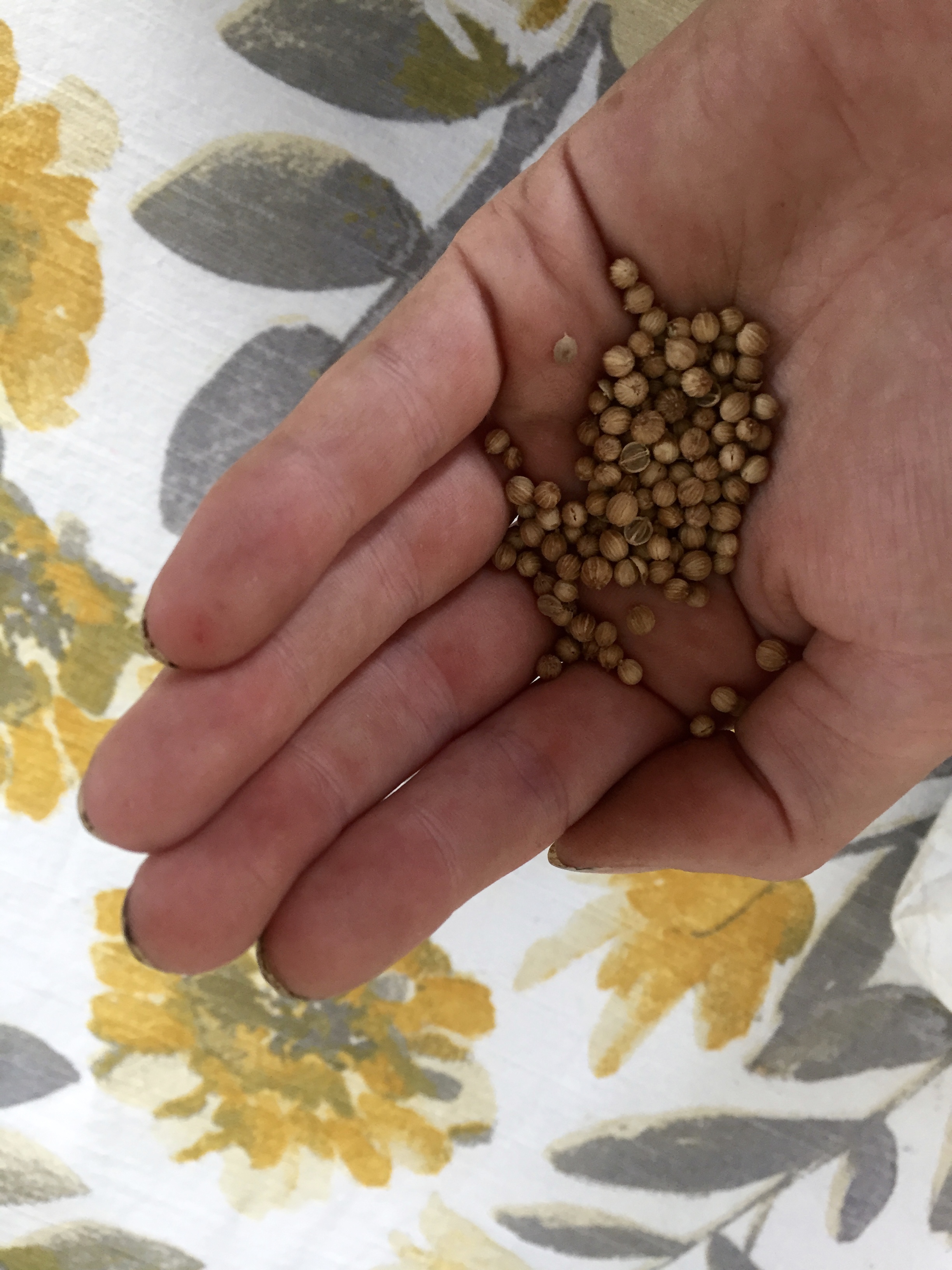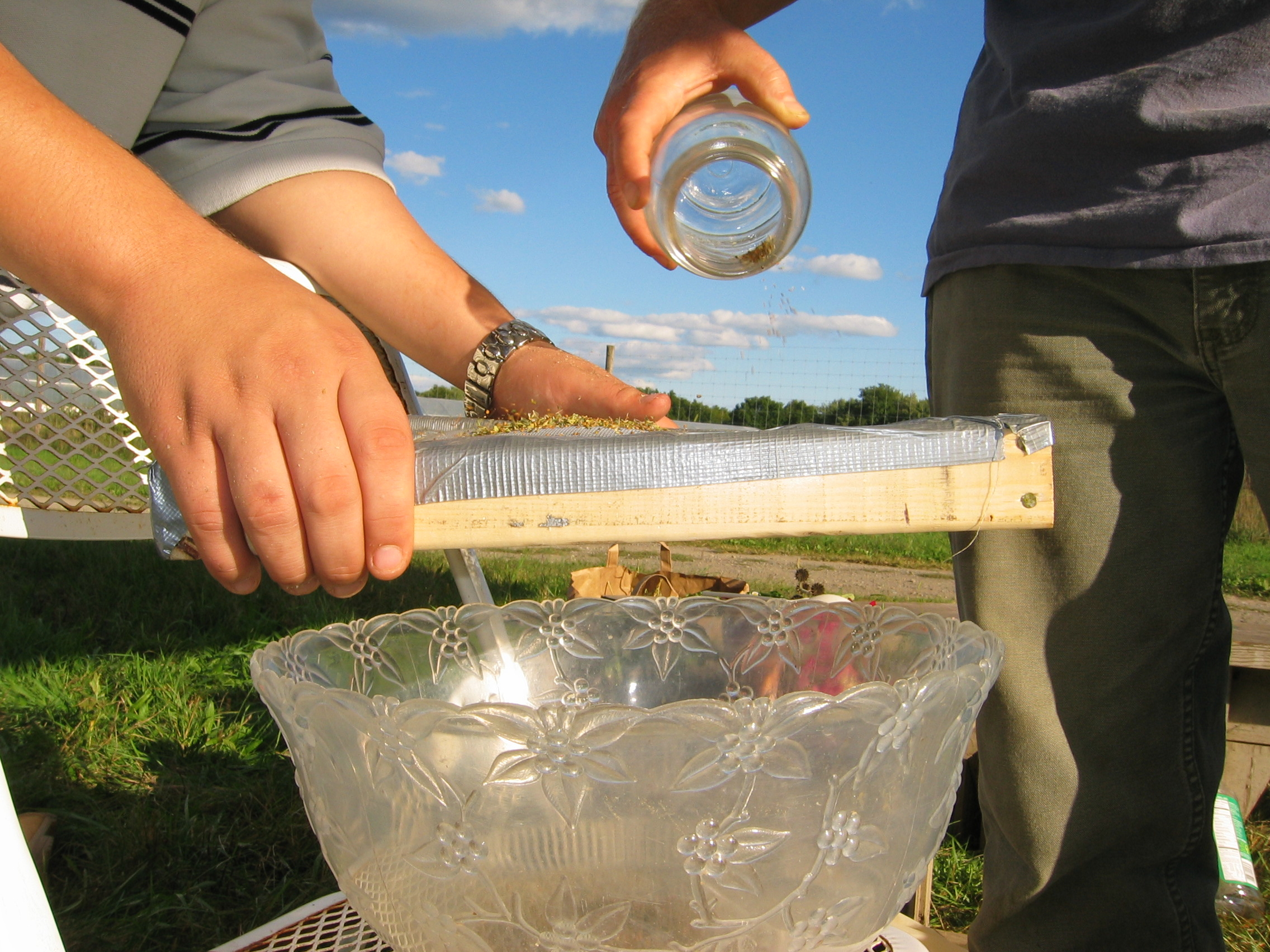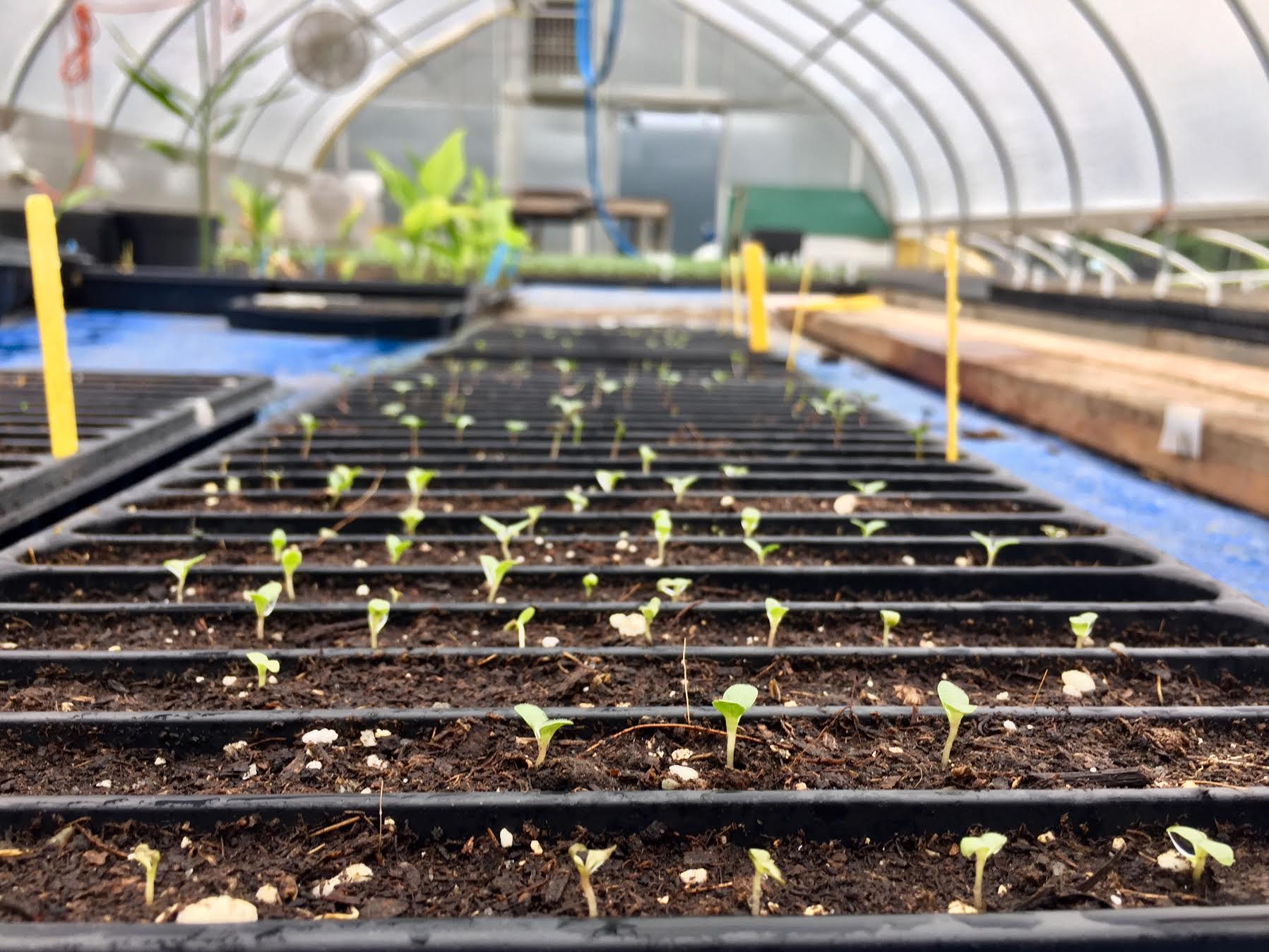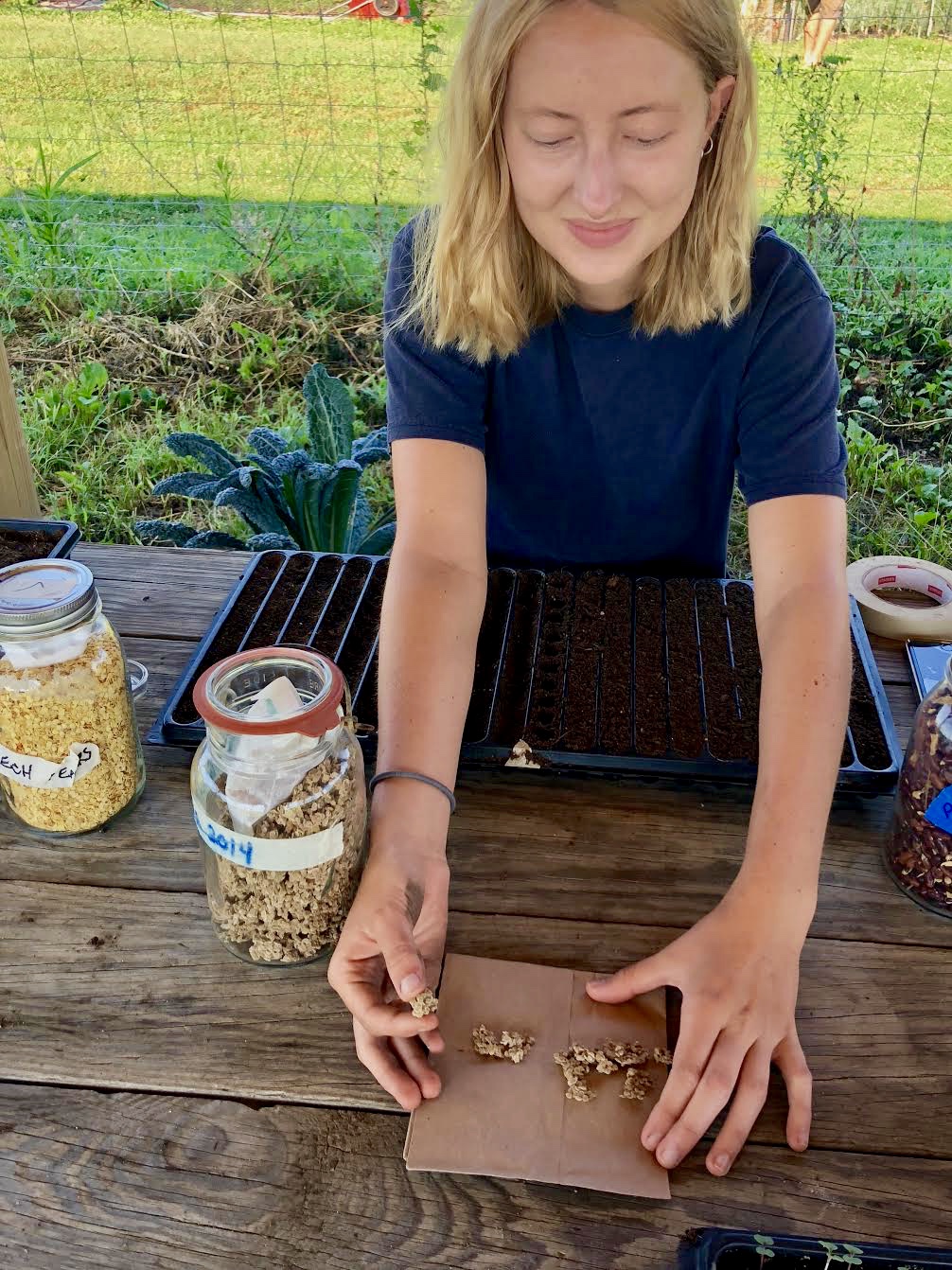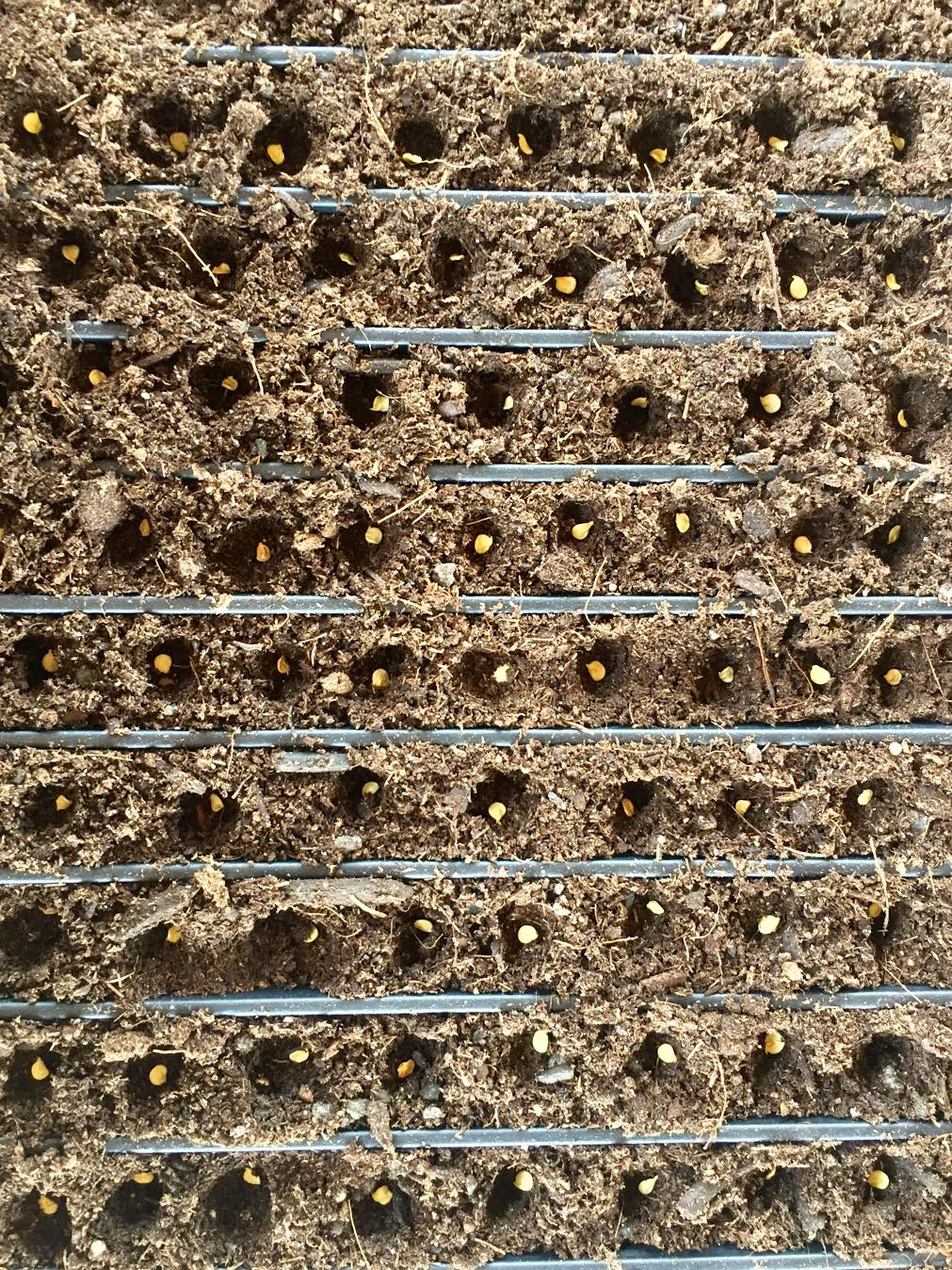By Elena Tesluk, Tarver Intern, Marist College
This summer, the education team (re)embarked on an exciting project: seed saving! To save seeds is to harvest and store seeds from present-day crops so that they can be used in future seasons. Over the course of the past few weeks, we’ve worked with seeds which were harvested by the farm as early as 2007. Since the initiation of the farm’s Seeds of the Food System program in 2006, team members have saved dozens of varieties of seeds. Working with these seeds now is like flipping through a grand bookcase of PFP history. Saved seeds remind us that seeds from the Gogosari Pepper were brought to the farm from Romania after former executive director Susan Grove’s time there in the Peace Corps. They also leave us with questions, like seeds from a “Mystery Lettuce,” harvested in 2010. One constant when it comes to seeds is that they’ve all got a story.
In a broader sense, to save seeds is to participate in a process that dates as far back as 10,000 years. Across history, seed saving has played a parallel role to that which it plays at PFP. By increasing self-sufficiency and food availability, seed saving has allowed civilizations to grow and thrive. At the same time, seed saving preserves the genetic diversity of crops AND connects farmers and gardeners with plants that are uniquely adapted to prosper in their environment! When farmers personally select the most successful plants from which to save seeds, they can define success on their own terms—that means future generations of the yummiest, best-performing plants from a given season.
In these ways, the seeds that we’ve chosen to save serve a function of memory. Saved seeds represent a given season and the people who were around for it. Beyond helping us remember our relationships with people, seed saving also helps us to preserve connections between ourselves and the environment. By taking an intentional role in natural systems, we increase our awareness of that relationship and of our role within it. This consciousness is helpful at every stage of our unending interactions with food and the environment—as we grow food, as we prepare food, as we eat food, and as we dispose of food waste. We applied this mindfulness as we returned to our seed saving project this month.
The farm has around forty varieties of seeds saved from previous years. Before we can we can share these lovely seeds—or use them ourselves—we have to conduct germination tests to see what proportion of the seeds are still viable. This means a lot of seeding, waiting, and counting.
When conducting germination tests, the first step is to plant one hundred seeds from each variety and year. Featured in this week’s seeding: Dragon Tongue Bean, Cilantro, and Red Russian Kale! Once the seeds are set in strip trays, we water ‘em and the waiting begins. Some seed varieties will take about a week to germinate, while others will keep us waiting for three weeks before we see any sprouts. Thanks to the diligent record-keeping of seed-savers past, we have an idea of how long it should take for each variety to complete germination. When a given variety finishes germinating, we count the number of sprouts in our strip trays. This number (out of the one hundred seeds planted) is the germination rate for that variety.
If a crop has a high germination rate, the farm will distribute or sell the seeds. Be on the lookout for PFP-grown seeds!
For crops with low germination rates, seeds will be planted in PFP gardens or used for seed art. Either way, these seeds’ stories don’t end here.



